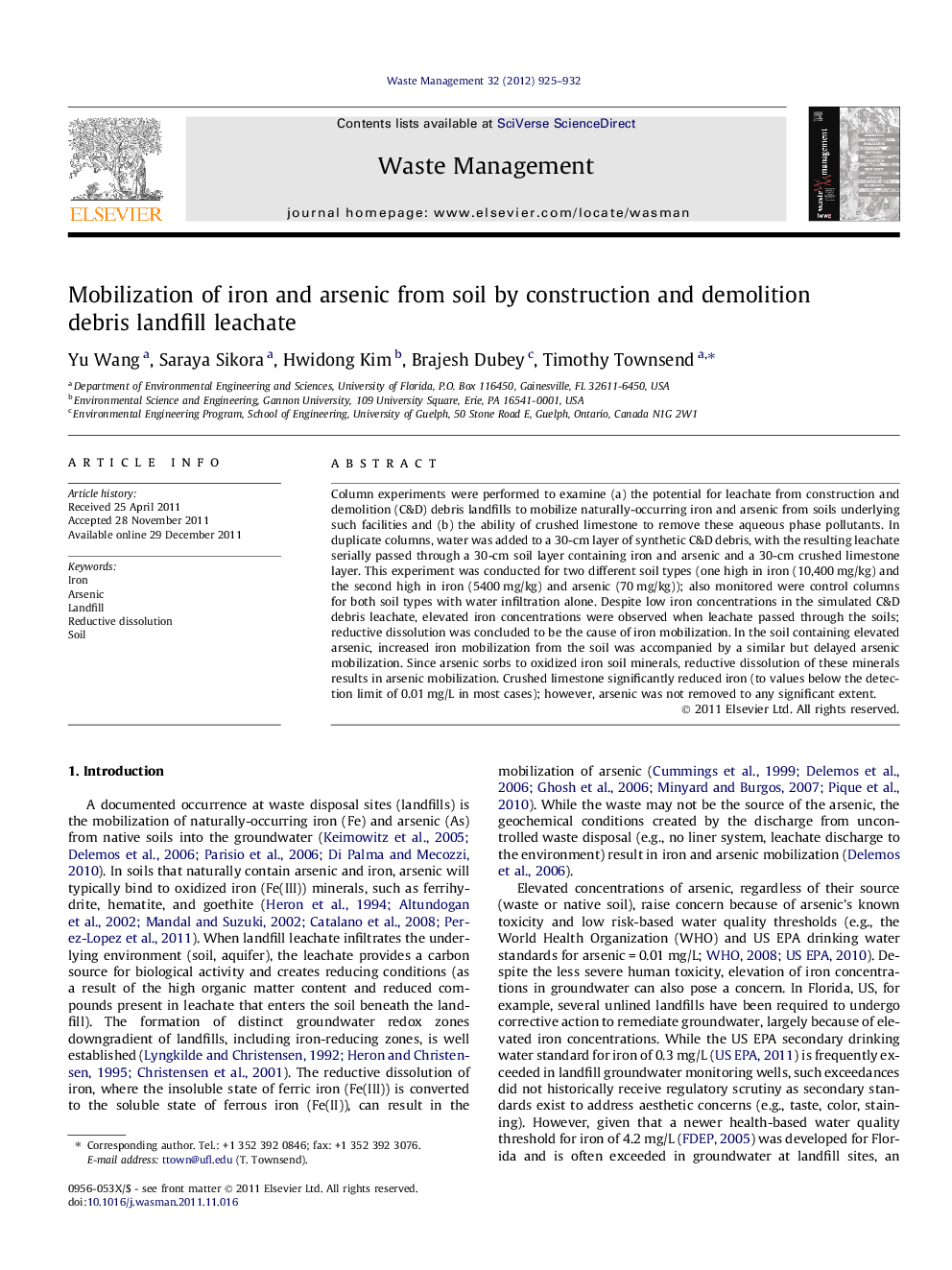| Article ID | Journal | Published Year | Pages | File Type |
|---|---|---|---|---|
| 4471932 | Waste Management | 2012 | 8 Pages |
Column experiments were performed to examine (a) the potential for leachate from construction and demolition (C&D) debris landfills to mobilize naturally-occurring iron and arsenic from soils underlying such facilities and (b) the ability of crushed limestone to remove these aqueous phase pollutants. In duplicate columns, water was added to a 30-cm layer of synthetic C&D debris, with the resulting leachate serially passed through a 30-cm soil layer containing iron and arsenic and a 30-cm crushed limestone layer. This experiment was conducted for two different soil types (one high in iron (10,400 mg/kg) and the second high in iron (5400 mg/kg) and arsenic (70 mg/kg)); also monitored were control columns for both soil types with water infiltration alone. Despite low iron concentrations in the simulated C&D debris leachate, elevated iron concentrations were observed when leachate passed through the soils; reductive dissolution was concluded to be the cause of iron mobilization. In the soil containing elevated arsenic, increased iron mobilization from the soil was accompanied by a similar but delayed arsenic mobilization. Since arsenic sorbs to oxidized iron soil minerals, reductive dissolution of these minerals results in arsenic mobilization. Crushed limestone significantly reduced iron (to values below the detection limit of 0.01 mg/L in most cases); however, arsenic was not removed to any significant extent.
Graphical abstractFigure optionsDownload full-size imageDownload as PowerPoint slideHighlights► Construction and demolition debris landfill leachate can cause iron reductive dissolution. ► C&D debris landfill leachate can mobilize natural arsenic and iron. ► Limestone removed dissolved iron from groundwater.
